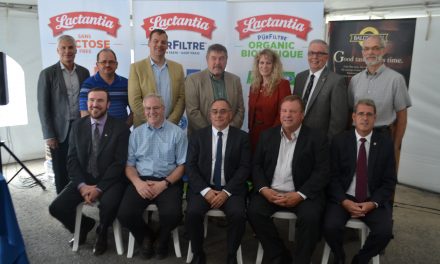by Jakob Vogel B.Sc (Agr.)
Dairy Consultant
Over the past several months, the tensions have been running quite high within the agricultural sector with NAFTA being the hottest topic around most family dinner tables. Although direct concern is associated with Supply Managed Systems (including dairy, eggs, poultry and turkey) the impacts will be felt across the industry.
Farmers comprise less than two per cent of the entire Canadian population. With rising expenses and decreasing profits, and taking into the consideration the average age of the Canadian Farmer being over 50 years old, we are in a crisis state to encourage and motivate young farmers to return to the farm or diversify the family business to become more profitable and more sustainable.
Every job has its down sides. Along with the financial responsibilities of running a farm, or agri-business also comes the unfortunate truth that many consumers believe that we as farmers are trying to kill them and only looking to make a dollar without any remorse for environmental impacts or animal care. After attending various meetings with Dairy Farmers of Ontario reps, Ontario Federation of Agriculture directors and Grain Farmers of Ontario delegates – I started to ask myself the following question, several times a day: “Who is to blame for the uneducated consumers?”
For years (now becoming generations), our industry has always had the consumer at heart. Continuously wishing for consumers to feel safe buying our products and consuming them. For a moment, take a step back and think of the technological advancements that we have had as an industry over the past 15 years. Precision Planting, fertilizer prescriptions, robotic milking systems and sexed semen just to name a few. Now – take a look at what has been happening for consumers. Social media, cell phones and the constant encouragement to attend post-secondary establishments where students are trained to ask questions and think outside of the box. Keeping in mind that the attendance in college or university is encouraged on both the producer and consumer side – we need to acknowledge that the experience of farming and non-farming students are different and thus affect the type of questions and how they question their surroundings. The end results are the same – younger people are asking a lot more out of the box questions, and are expecting answers!
Have you started to ask yourself some questions yet? In case you haven’t, here’s a few that I’ve personally been asked and heard over the past couple of months, most of these coming from my fiancée (who teaches in Cornwall);
- If non-farming students are not exposed to modern day agriculture, how can we expect them to know the basics?
- If a brown chicken lays a brown egg, why wouldn’t a brown cow make chocolate milk?
And my personal favourite:
- Why can’t we use the corn in the field for dinner tonight?
The USMCA trade deal negotiations (now in revision process) has created a multi-faceted movement throughout the industries in the attempt to promote the purchasing of 100 per cent Canadian products. From viral videos, news reports, pictures of the blue cow, and live interviews with Canadian farmers – the underlying message is the same, the space from farm to fork is gaping and only becoming larger. We must re-align ourselves as an industry, with our time, money and investing power to promote not only the purchasing of Canadian products – but educating the consumers on why they should be looking for 100 per cent Canadian products. After all, if the consumer does not know the difference between products, what is encouraging them to take the extra two minutes during their shopping to look for a blue cow or a Canadian Grade A logo?
All preamble aside – most, if not all farming organizations, or commodity groups have a budget for marketing and advertising. What about, rather than investing into programs that have had questionable results, and none of which have been successful on piercing the rural-urban divide (except for the Farmers Feed City swag – that had been spotted in Toronto about five years ago) we start investing in agricultural based resources for teachers?
These resources need to be available for teachers of all ages but also need to be easily accessible and low cost! In addition, we need to educate the educators or at least make it easy and encouraging for them to utilize these ag resources. The only remaining questions is – how? With the provincial government in the midst of reviewing the curriculum… is this the best time to lobby for an agricultural component to be added into the curriculum and allow for the teachers to be trained by ag specialists? If our marketing boards were able to invest a portion of their marketing budget to programs for teachers or, help support funded training opportunities, we could slowly work at minimizing the divide between the farm gate and the dinner plate.
I firmly believe that Canadian farmers are passionate people who work countless hours to produce the best quality product for consumers. Instead of fear-mongering consumers with concepts such as RBST-Free or GMO-Free products, why not educate them and promote the science, regulations, and most importantly the passion that our industry grows with on a daily basis.












